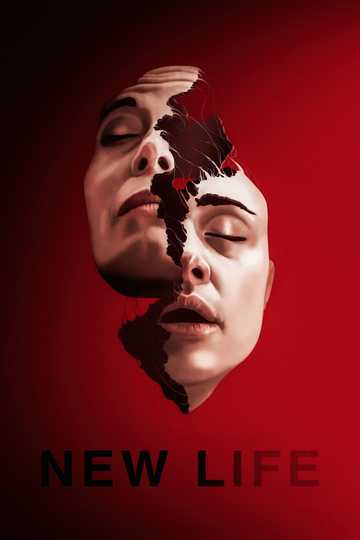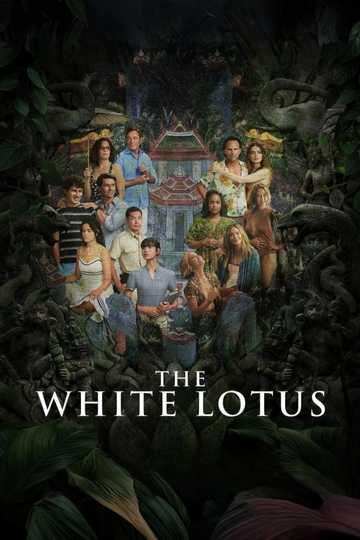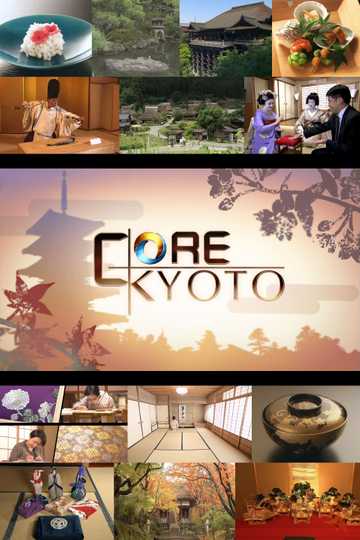Season 10 Episodes
1. Woven Gold and Silver: A World of Shimmering Patterns
Gold and silver threads, made by lacquering gold and silver leaf onto washi, are indispensable in Nishijin brocade. The opulent appearance led to generous use in court and religious attire, and in festival floats and palanquins. In the 1960s, mass production of lamé enabled the industry to diversify into women's fashion. But now it is in crisis with a lack of craftsmen, and market shrinkage due to the pandemic. Discover how artisans struggle to conceive fresh ideas and create new opportunities.
2. Conversations: A Living Museum of Modern Architecture
After the capital moved to Tokyo in the late 1800s, Kyoto citizens enthusiastically modernized the city. Many of the buildings from that era, which were inspired by Western architectural techniques, still stand today. Professor Nakajima Setsuko of Kyoto University researches modern architecture. Malian Oussouby Sacko, president of Kyoto Seika University, specializes in architecture in Japan. They discuss how the transformation and rebirth of modern architecture hold hints for the future.
3. Writing Implements: Modern Elegance in Traditional Stationery
Aristocracy, samurai and high-ranking citizens of the ancient capital prized writing implements of sophisticated design, made with expert skill. Stationery was seen as conveyance of their intellect and sense. This deep-rooted calligraphic culture survives in Kyoto in fountain pen ink inspired by Kyoto's dyeing specialists, colorful pastels in traditional hues, and jewel-like glass pens. Discover how the world of ink and other stationery continues to enrich people's lives in the ancient capital.
4. Kyoto's Countryside: Compassion for Nature and its Blessings
Kameoka, west of Kyoto, has supplied lumber and foodstuffs to Kyoto for over 1,000 years. Today it aspires to be an Environmentally Advanced City through the efforts of the sightseeing boatmen tackling garbage issues. Recently young people have been relocating there, attracted by a lifestyle closer to nature. A greengrocer forges ties between city and rural areas. A potter revived the Yakishime ceramic style. Discover what the future holds for Kameoka where traditional and modern customs merge.
5. Conversations: The Power of Women in Decorative Arts
Nagakusa Sumie, born and raised in the textile area of Nishijin, was taught how to embroider kimono with elegant designs by her parents-in-law. Eri Tomoko learnt to embellish Buddhist statues with fine strips of gold foil from her late mother, Sayoko, a living national treasure during her lifetime. They discuss the role of women in handicrafts and how the exquisite skills used in Kyoto-style embroidery and Kirikane foil trim are in danger of being lost with the decrease in specialists.
6. Gateways: Sacred Demarcations that Repel Evil
Gates allow passage through walls, fences and hedges, which separate individual premises from the outside. Temple, castle and residential gates take various forms depending on their design, location and purpose. In some cases, they act as borders between the sacred and the secular to repel malevolent forces. Discover the diversity of gates in the ancient capital, from the elaborate and decorative to the simple.
7. Buddhist Bells of Prayer: A Universe of Sound Cleanses the Heart
The tone and timbre of Buddhist bells depends on their shape, thickness and metal composition. When the ancient capital was established in the late 8th century, temple bells were positioned in auspicious directions in relation to the imperial palace so their peal could protect the city. Some people are working to create a new "sound of Kyoto" based on these bells. The small bells used in Buddhist rites have transcended boundaries and are being used in everyday life for their calming properties.
8. Conversations: Learning Aesthetics from the Ancients
American photographer Everett Kennedy Brown, a resident of Kyoto, traveled more than 50 countries during his career as a photojournalist before settling in Japan over 30 years ago. He expresses Kyoto as he sees it using wet plate collodion photography. Up-and-coming artist Yamada Shinya merges the worlds of Nihonga painting and anime characters in his works to international acclaim. They discuss the source of Kyoto culture through their respective arts.
9. Old Building Materials: The Ancient Capital's Culture of Recycling
Kyoto has many shrines, temples and traditional structures, spurring people to place special value on old building materials over the centuries. After the Middle Ages, merchants at the center of commerce and industry were thrifty in using old lumber in their townhouse-style residences. Even in modern times, old fittings and timber are reused and repurposed. Discover the spirit of perpetuity through the passion of artisans and craftsmen as they use old wood to give birth to a new aesthetic.
10. Dried Foods: Ancient Wisdom Gracing Kyoto Tables
Dried foods evolved as an efficient way of transporting produce to the ancient capital. The practice increased not only their shelf life but also their tastiness and nutritional value. The foodstuffs were used to cook creative dishes, giving birth to a distinct culinary culture in Kyoto. But as modern lifestyles became more hectic, they lost favor due to the time required for rehydration. Discover how dried foods are again gaining attention as a way of using misshapen produce to cut food loss.
11. Art Frontier: Creators Forge New Paths into the Future
Kyoto artists are focusing on new styles of art, based in the traditions of the old capital. One captures paint splashes with a high-speed camera to create "ikebana" in motion. Another uses the natural slippage that emerges when dyeing and weaving handicrafts to create works with a human touch. Advocates of the arts are organizing large art festivals and providing dwellings for young artists to help them hone their styles. Discover how artists are reimagining Kyoto as a "future city of art."
12. The Lights of Kyoto: Illuminating and Soothing People's Hearts
Candles were long prized in the city's many shrines and temples, and throughout the ancient capital. People did not see them as mere implements to illuminate the dark but also symbols of devotion and prayer. Antiquated candles and lamps are not as commonly used in contemporary times, but are still seen in places of worship. Some people relish and use the lighting at tea gatherings and places of work. Discover how Kyotoites use old-style lighting to bring calm and relaxation into modern life.
13. Shikimono: The Culture of Living on the Floor
Tatami, cushions and futon--collectively referred to as Shikimono--evolved in the imperial palace, shrines and temples to suit the Japanese custom of sitting and sleeping on the floor. But, the popularity of chairs means less need for tatami rooms, and artisans are adapting traditional Shikimono for modern life. And, the concept of recycling Shikimono, long ingrained in Kyoto, is regaining attention with emphasis on sustainability. Discover how Shikimono continues to evolve with the times.
14. Wazuka Tea: A Vibrant Village of Fragrant Fields
The town of Wazuka in southern Kyoto Prefecture has recently been in the spotlight as a producer of quality tea leaves. It produces around 40 percent of renowned Uji tea and 20 percent of choice Tencha leaves used in matcha nationally. The vista of the mountain tea plantations attracts many tourists. Discover how farmers running a popular guesthouse, housemakers tackling the challenges of a sustainable lifestyle, and other villagers strive to ensure their fragrant tea culture remains relevant.
15. The Beauty in Copying: An Art Form of Aspirations
The tradition of copying evolved in Kyoto over centuries through woodblock prints and reproductions of artworks. A 17th-century monk etched 60,000 woodblocks with sutras to promulgate Buddhist teaching. The collotype printing technique faithfully reproduces Kyoto's famed works of art. One initiative uses the latest scanning technology to preserve historical buildings and Buddhist statues as 3D digital data. Discover the techniques and aesthetics in copying through the people involved in the art.
16. Conversations: The Colors of Kyoto
Textile producer Shimura Shoji dyes threads for his kimono and other items with natural pigments, used since ancient times. Together with his mother and grandmother, both dyers, he founded a school to propagate the use of plant-based dyes. Florist Urasawa Mina encourages the enjoyment of flowers in everyday life. Her original floral arrangements attract attention for her Paris-style, dense composition using neutral colors. The 2 discuss how they view and use color in their respective fields.
17. Ornamental Metalwork: Magnificent Mastery Transcends Generations
Ornamental metalwork evolved mainly in the ancient capital through the patronage of the imperial court and places of worship. Metalworkers beat, stretch, carve, shave, and cast metal to create nail-head covers and door handles, ritual implements for Shinto palanquins and festival floats, kimono accessories, incense burners, kettles, and other items. Discover how a 230-year-old workshop, run by the 7th-generation proprietor, continues to polish its expertise and nurture successors to the trade.
18. Men's Kimono: The Beauty of Dressing with Flair
Kimono are worn as formalwear and in cultural pursuits, but few men don them and the market has shrunk. Various initiatives aim to reverse this trend. One man sells outfits to dispel the image of kimono being expensive and bothersome. Another aims to revive the bold, showy style favored over 400 years ago. A connoisseur repurposes old kimono, adding the subtle flair of later fashion. An artist dyes kimono to suit the wearer's tastes. Discover how they strive to revive the appeal of men's kimono.
19. New Directions for Washi: The Sustainable, Elegant Use of Paper
A washi designer combines huge sheets of washi with lighting to enliven open architectural spaces. Stoles made from dyed, washi-woven textile are the amalgamation of traditional Kyoto chic. An apparel company sells washi clothing and later collects them to make vegetable fertilizer. Daily items made from papier mache-style lacquer using washi enjoy renewed interest for their ability to be repaired for reuse. Discover how Kyoto's traditional skills and culture stretch the potential of washi.
20. Kamo River: The Flow of Life and Culture in the Ancient Capital
The Kamo River flows 23km north-south through the city center. Emperors on their enthronement would once purify themselves in its waters, and dyers would rinse bolts of fabric downstream. An entertainment district evolved downtown along the banks, and remains today. Wild birds can be seen year-round, and in summer anglers catch sweetfish. The river is also habitat to the Japanese giant salamander, a protected species. Discover the river's history and its cultural influence on life in Kyoto.
21. The Spirit of Frugality: Modern Ingenuity and Age-Old Wisdom
As the ancient capital, Kyoto is known to be graceful and splendid. But the merchant and lower classes were thrifty, cleverly using the resources at hand. They treasured their belongings, using them regardless of wear and tear, until they were unusable. Today, Kyoto cuisine embodies this ethos--seasonal ingredients are never left to waste--and artisans diligently repair damaged craftwork. Core Kyoto discovers how the spirit of frugality permeates every aspect of modern life, from art to energy.
22. Dashi Stock: Savory Umami for Exquisite Cuisine
When Washoku, or Japanese cuisine, became UNESCO Intangible Cultural Heritage in 2013, the flavor called umami became more widely known abroad. And, dashi is the ingredient that produces this umami. Kombu, bonito flakes, and other foodstuffs that were transported to the landlocked capital were combined to concoct this stock. Japanese today less frequently consume traditional foods, so businesses are holding dashi tastings and creating foods for all generations to rediscover the allure of dashi.
23. The Dragon: Deity of Water, Protector of the Capital
Belief in imaginary, spiritual dragons arrived from mainland Asia and differs in Shinto and Buddhism. The blue dragon, as water deity, is one of the directional guardians believed to defend the ancient capital to the east. In Shinto, the water deity appears in various guises at shrines. In Buddhism, dragons ward off fires, bring the virtuous rain of Dharma, and often adorn the ceilings of lecture halls at Zen temples. Trace the dragon's footprints in worships and culture throughout the city.





























